-
Posts
3,901 -
Joined
-
Last visited
-
Days Won
3
Content Type
Profiles
Forums
Blogs
Gallery
Events
Store
Posts posted by Noor
-
-
a little pit more about Jasper's grandfather and article about the pub:
Colonel Fawcett’s Duel
Yet another local pub loses its historic name: The Camden Arms in Randolph Street is now The Colonel Fawcett. This is not quite such crass vandalism as the renaming of The Old Mother Redcap. At least the new name has a local connection. This is the story.
Almost the last formal duel in this country was fought in 1843 in a field near The Brecknock Arms in Camden Road. Lieutenant Alexander Munro challenged Lieutenant-Colonel David Fawcett, his brother-in-law. They fought with guns.
Munro was serving with the Royal Horse Guards (Blue) and lived in Brompton Square. Fawcett lived in Sloane Street and had recently come back from China, where he had commanded the 55th Regiment of Foot. He was 34 and had a young family.
Apparently Munro had insulted Fawcett’s wife. As well as that, Munro had looked after Fawcett’s affairs while he was in China and they argued over the sale of a property.
They fought and, although was this still a rural area, a constable arrived quite soon to find Fawcett bleeding from a wound in the chest. When asked what had happened, Fawcett said ‘What is it to you? It was an accident.’
The owners of The Brecknock Arms were not around and the waiter refused to have the wounded man on the premises, so the poor fellow was carried down to The Camden Arms and died there two days later.
At the inquest the jury brought in a verdict of wilful murder. (The coroner was Thomas Wakely, founder of The Lancet.)
Fawcett’s second, Lieutenant Cuddy, was tried at the Old Bailey but the jury seemed unwilling to find him guilty. A charge against the surgeon who was at the scene was not proceeded with. This was George Gulliver, the surgeon of Fawcett’s regiment. Munro’s second, Mr Grant, was meant to be tried at the same time but did not turn up. He finally surrendered himself for trial but was found not guilty.
Munro avoided justice for four years by going abroad but eventually returned to stand trial at the Old Bailey. He was found guilty and sentenced to death but there was a strong recommendation of mercy and his sentence was commuted to twelve months’ imprisonment. However, his military career was ruined.
The is, in fact, one more recorded duel in England. In 1845 Lieutenant Henry Hawkey killed Captain James Alexander Seton.
0 -
Hi all,
Some days ago I received one nice BWM for my core collection. It was named to "LIEUT. J.E.FAWCETT". So far I was able to find out following about him:
Jasper Evelyn FAWCETT (17 February 1867 - 1937)
Royal Army Pay Department
Lieutenant
Jasper was born in Dublin 17 February 1867 as a son of John Fawcett and Isidora Jane Fwacett. He also had younger sisters Eva, Ida, Margaret and brother Joseph. His mother Isidora was only daughter of Lieutenant Colonel David Lynar Fawcett, C.B. commander of 55th (Westmorland) Regiment of Foot in China. Colonel Fawcett saw service in India and in China war. He was killed in one of the last formal duels in England 1843 by his brother-in-law in Camden Town in London. There is now pub called The Colonel Fawcett pub.
Isidora married 1865 with John Rowland Fawcett, who was called the Bar at King’s Inns, Dublin 1841 and was a J.P. for Co.Roscommon. John is listed on the Roscommon County Directory 1862 as a magistrate - Friars Park, Ballymurry. He died 1900. One of his addresses is given on the The County Families of the United Kingdom, Ed. 59 as 55 Belmont Avenue, Donnybrook, Co.Dublin.
His mother Isidora passed away Christmas Day 1919 and is buried in the Mount Jerome Cemetery, Dublin.
11 November 1889 Belfast newsletter lists Jasper as Barrister-at Law: "Mr. Jasper Evelyn Fawcett. eldest son of Mr. John Fawcett of Raglan Road, in the County of Dublin and of Friars Park in the County of Roscommon. Barrister-at Law".
1890 Law Directory shows him 55 Belmont Avenue, Donnybrook.
1894 Slaters Royal National Directory of Ireland - Fawcett Jasper, E - barrister, 3 Belvidere pl. Also his brother John R is listed in the same location.
1911 English Census shows him as a boarded in Paddington. His occupation is listed Manager, manufacturing agency. Same time his mother lived Ormond Road, Rathmines, Dublin.
Now, during the Great War he was employed by the Royal Army Pay Corps and he received rank Lieutenant at 26 November 1917 whilst serving with an Expeditionary Forces. He was age 50 then!
Medal Index Card shows that he landed in France November 1917. He applied his British War Medal and Victory Medal 9 April 1920 (now, there is a text "2/Lt. J.E.Fawcett makes app. for the BWM medal". Also medal roll shows Remarks "BWM 13.12.21". So, I am not sure did he even received Victory Medal?)
His address is given: 3 Effingham Road, Lee Green, London SE.
He relinquished his Commission on 4 May 1919 (thanks “paymedals”)
Consular Deaths 1936-1940 shows that he died in Vienna age 70 at 1937. Is there any other sources where I can see whats happened with him in Vienna?
Any other information about him would be great or ideas how to research him.
I think it is interesting medal and great research project. I like medals that has connection with the local area (Ranelagh, Rathmines, Donnybrook) in Dublin.
Thanking you in advance,
Noor0 -
Also, he enlisted 26 January 1916. Wounded 15 November 1916. But survived.
Son of Angeline Amato. He had five children ages from 1.5 years to 8 years of age.
Furlough in Canada on compassionate grounds 12 March to 4 June 1918. He failed to report to depot following authorized furlough, he was arrested and detained on 30 October 1918. Shortly afterwards was admitted to hospital and was discharged on 18 December 1918 as Medically Unfit.
0 -
For Canadian medals this is your site to check:
Frank AMATO
Born 15 January 1889
Lived 28 Mansfield Avenue, Toronto
Wife Mary Amato
Trade Builder
He was Roman Catholic
You can copy his first and last page of service papers on the site above.
0 -
Henry H SPENCE was entitled only British War Medal and Victory Medal. He was later on transferred into Labour Corps (517329) and then Lancashire Fusiliers (60508).
0 -
Hi,
Nice medals. Are your British medals researched? Can you please post the namings and perhaps we can help you here.
Regards,
Noor
0 -
Hi all,
I got his papers a long time back but haven't had time to look at them closely. Unfortunately no interesting facts. This poor officer was more sick and between medical boards then in France.
Entitled British War Medal and Victory Medal. Applied medals 29 April 1921.
Lived: 5 Sandycove Avenue, Kingstown (now Dun Laoghaire), Ireland
Good moral character certificate when he wanted to become an officer was signed by Dublin Lord Mayor Sir James Gallagher (1915-1918).
During the war address on the service papers was given as Conyngham Road Parkgate Street, Dublin 8.
Arrived to 9th Battalion Royal Dublin Fusiliers in France 27 July 1916.
Officers rejoining from Hospital 16 November 1916
Officers to Hospital Sick 26 November 1916
Rejoining from Hospital 11 December 1916
Officers to Hospital Sick 2 January 1917
During his time in the front line he saw some action on the Wytschaete Sector.
Operated in France on 1st and 2nd February 1917 for Appendicitis. Date of leaving unit from France 22 February 1917. Sick leave until 15 March 1917.
Unfit for General service from 30 April 1918. He was at this time attached to the 2nd Garrison Battalion, Royal Munster Fusiliers.
July 1918 he was still found unfit for general service.
Demobilization 8 January 1919 (LG 14 July 1920).
Rest I think I was able to capture from the Irish Times and other sources from Ancestry.
Still interesting medal with the Dublin famous OTC and Easter Rising "twist"! (BWM on the photo is replacement)
0 -
Hi All,
I have here one rather interesting piece, that I randomly found here in Dublin many moons back. I didn't paid attention on it a long time and now, when I decided to let some pieces go from my humble collection, I re-discovered it from my junk box.
After some research, I understand that it is a 1798 Irish Rebellion 100 years commemorative medallion. It has text "Who Fears To Speak" and "Ireland Forever". On the reverse there is a Birmingham maker stamp.
Now, when I tried to find more out about this piece, I suddenly struggled - nothing available on internet. Only one similar piece was sold by Adams auction house in Dublin five years ago. This item was only in silver and was also hallmarked Birmingham and year stamp 1897. So, I am fairly sure that mine was made at the same time.
I just wanted to check perhaps any Irish collector (who I am not - I collect Irish regiments under British crown up to 1921) have spotted any similar pieces or/and have some extra information about it.
Thanking you in advance,
Noor
' alt='' class='ipsImage' >
' alt='' class='ipsImage' width="1000px" height="467px">
' alt='' class='ipsImage' >
' alt='' class='ipsImage' width="1000px" height="467px">
0 -
Eeee, I was looking your scans again and looks like second KSA clasp is hidden behind the ribbon. You just need to fix the ribbon before you sell them
 0
0 -
Kings South Africa medal to 1679 Pte. H.Plows - 2nd Battalion King's Own Yorkshire Light Infantry. He was entitled as well 3 clasp Queen South Africa Medal. Medal Yearbook values these £80-100 but because missing clasp, I recon ca. £55-65 range (still very common medal and if your man wasn't casualty or bravery award winner, then one of the many KSAs, that are available in the market).
 0
0 -
Hi all,
I have here one nice George V Efficiency medal with the "Territorial" scroll. Medal was awarded to "5377520 GNR.S.H.G.ELLIOTT RA". Thank you to the help of other forum member, I was pointed out that he was a POW during WW2.
Can someone please advise how I can research this man's service and also what else he was entitled to in order to get his set together? I was initially thinking that because George V period medal, he had service in the WW1 instead.
Any help and ideas would be great!
Timo aka Noor
S. H. G.
Last name Elliott
Service number 5377520
Prisoner of war number 4151
Rank Lance Corporal
Regiment The Oxfordshire and Buckinghamshire Light Infantry
Camp type STALAG
Camp number 20A
Camp location Thorn Podgorz0 -
Hi Dave,
I actually just received very comprehensive answer over British Badges Forum - it is certainly Royal Irish Regiment crest
Thank you for your replay!
Timo
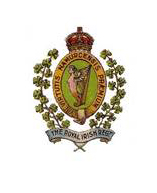 0
0 -
Hi all,Before I put this one up on sale I just wanted to confirm that the crest on this ring is indeed DMP? Inside hallmarked. Also I picked it up from Dublin.Kind Regards,Timo
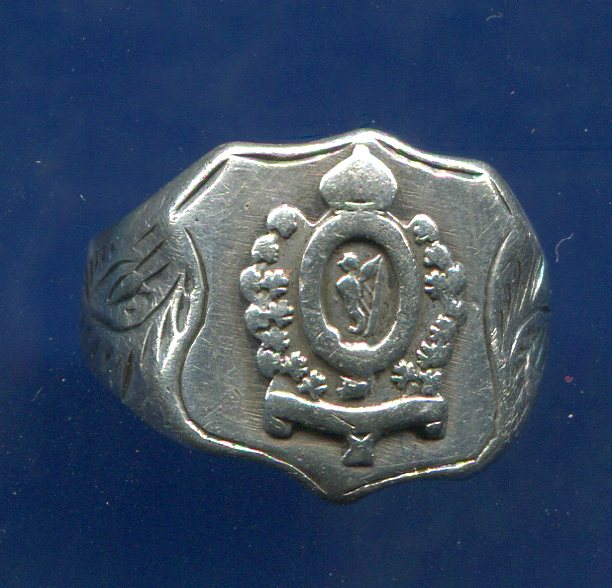 0
0 -
Hi all,
I spotted these SA medals in Dublin and I would like to ask few questions - how much they would be worth (or is the medal yearbook accurate regards SA prices). Also are these researchable and if so, are they worth to pick up?
Any help would be great.
Kind Regards,
Timo
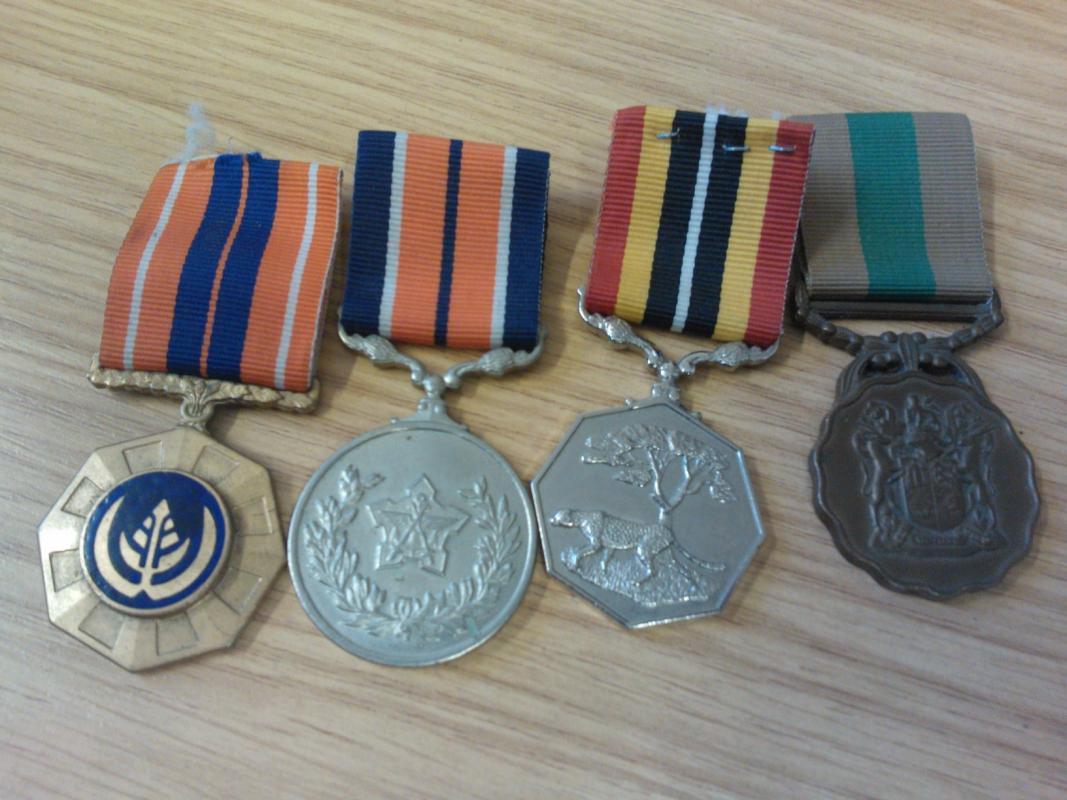
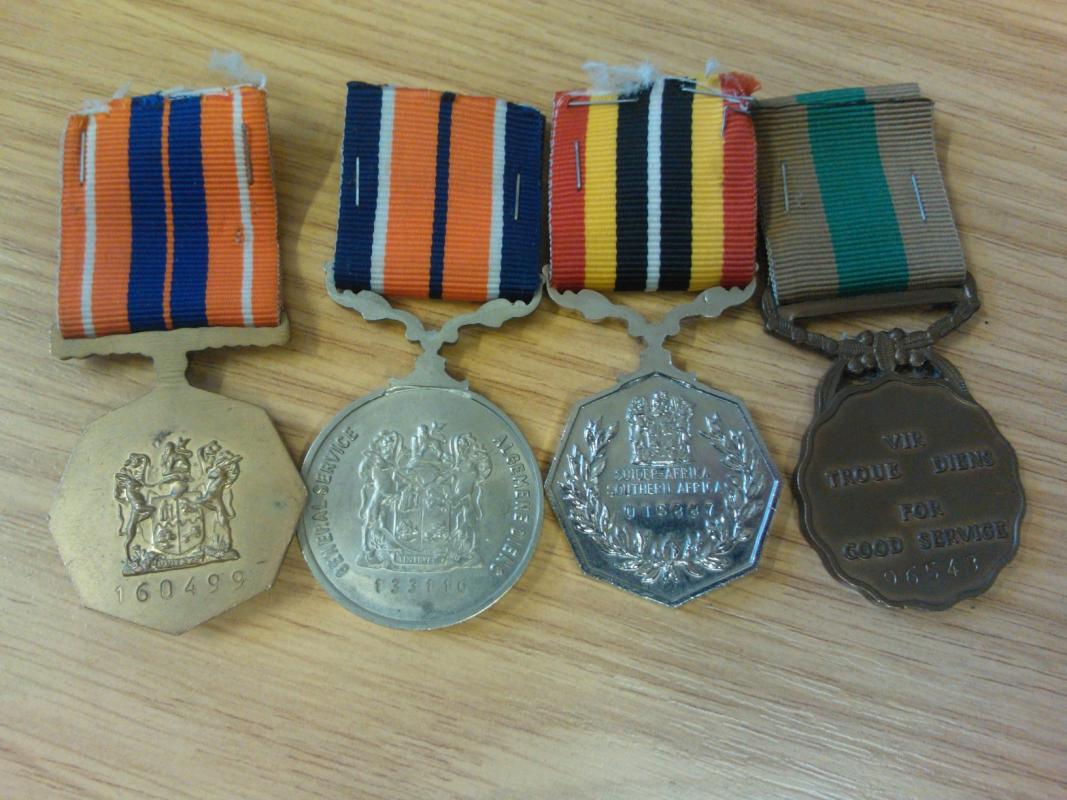 0
0 -
Hi all,
Some time back I picked up these wings from the dealers junk box. Just looked old and odd enough to spend €2
 .
.But I still haven't been able to ID them. Perhaps some (aviation) enthusiast here knows more about them.
In the middle, three castles represent most likely Dublin. Around the castles there are letters "D.G.C.". My best bet was "Dublin Glider Club" but when I spoke with the people from Royal Aeronautical Society, they didn't confirm that idea.
Any ideas would be great!
Thanking you in advance,
Timo
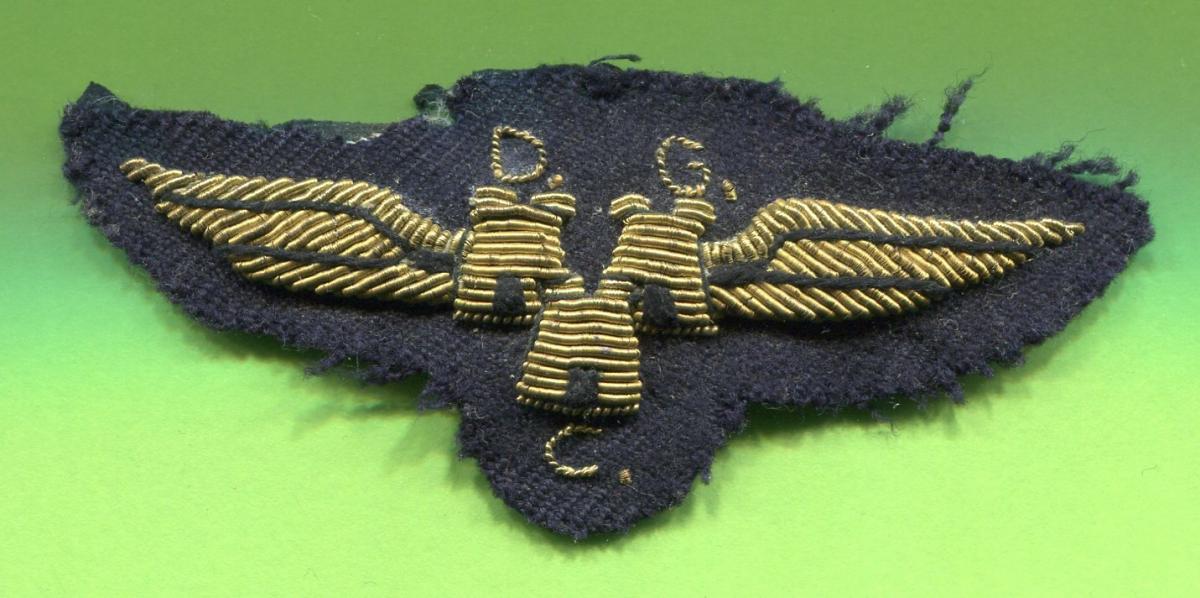 0
0 -
Thanks Mervyn! I can't wait to get his service papers from Kew - they will give me so much extra information!
Also, because who he was, I am sure, picture of him must exist somewhere!
Have a good one guys,
Timo
0 -
Hi all,
I picked up this badge randomly from Dublin and I would like to ID it now. Looks like older communist era by construction and style? Perhaps 1950s-60s?
Also I "Googled" it but not many hits (or the ones that I am not able to read:)). Anyway, like I understand it is Polish Excellent Driver 2nd Class badge. Now, can someone please confirm the era and also how common it is?
Thanking you in advance,
Timo aka Noor
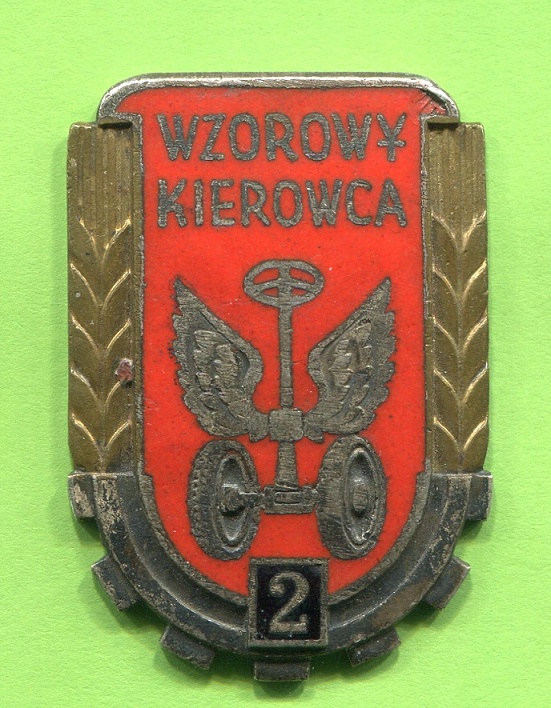 0
0 -
Next information piece that I got shows again that some nationalists Irish officers, who were politically minded believed the Easter Rising damaged the prospects of Home Rule. O'Dowda-Wade took part the Easter Rising as well.... against the Sinn Fein. He was attached to the Dublin University OTC column. After the war, like Irish Times shows, he took part public movements with the same men, who he fought in Dublin 1916.
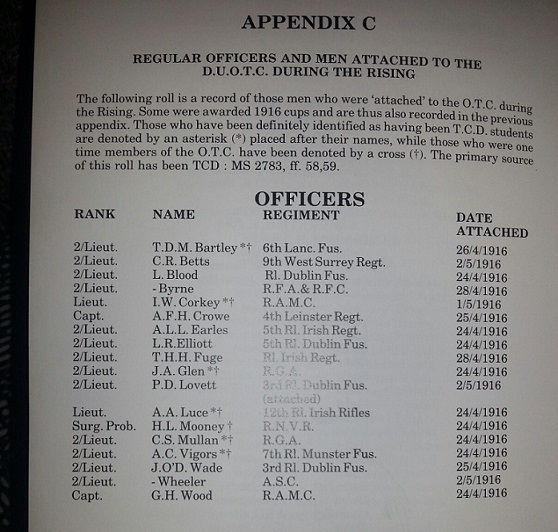 0
0 -
Thanks guys! Devlin was interesting figure, especially because when the war broke out he sided with Redmond's and supported recruiting into Irish regiments, etc. So, he was nationalist but he wasn't extremist. Probably his view was shared with Joseph O'Dowda-Wade, when he commissioned into the Royal Dublin Fusiliers as well.
0 -
Hi all,
Here is my next research project, when I find some free time from the college studies, kids and 1001 other tasks that has to be done.
I was able to pick up nice Victory Medal that was named to "2 Ltn. J. O'Dowda-Wade". His MIC shows that he was entitled only VM and BWM pair, so only one medal to locate now. Also that he served with the Royal Dublin Fusiliers - only reason why I wanted that medal in the first place.
He landed in Frane July 1916 and on MIC his address is given as 5 Sandycove Avenue, Kingstown (now Dun Laoghaire).
London Gzette research shows that he was commissioned to the rank 2nd Lieutenant on 1st January 1916.
Rest of the information I have found from the Irish Times...
Joseph O'Dowda-Wade was born 1886 as a son of well known merchant Matthew Wade from Sandycove. He was educated in the college in Liverpool where he became musician (singer). 1909 he won gold medal of Feis Ceoil music competitions.He was well known baritone in Dublin, especially in Abbey theater.
When the war broke out, he also took part of Irish Deputation in Paris at May 1915. Probably because his friendship with nationalist parliament member Joseph Devlin, who was part of delegation. Until up to the time when he was commissioned, he organised concerts in order to raise funds for Irish troops or/and for wounded soldiers.
Unfortunately his career as an officer didn't last long. He received a severe wound that disabled him from the front line. But he appears again on the concerts lists as a Lieutenant from March 1917 (Soldiers Central Club 27.03.1917). I presume he was listed as an officer with the 3rd Reserve Battalion, as stated on his MIC.
He sang as well in Belfast, where his friend Joseph Devlin was active and also in London. He appears concerts lists up to 1935.
Sad news was posted up on 5 September 1936 that Joseph O'Dowda Wade passed away suddenly age 50. His last address in given as 49 Kenilworth Square, Rathgar, Dublin (Just ca. 2 km where I live!).
I can see that his service papers are in the National Archive, so I am hoping to get them via researcher. Also I am planning to contact with the Abbey theater because there can be some photos, etc about him.
Now guys, is there any other ideas or recommendations how to research his life would be great?
Kind Regards,
Timo aka Noor
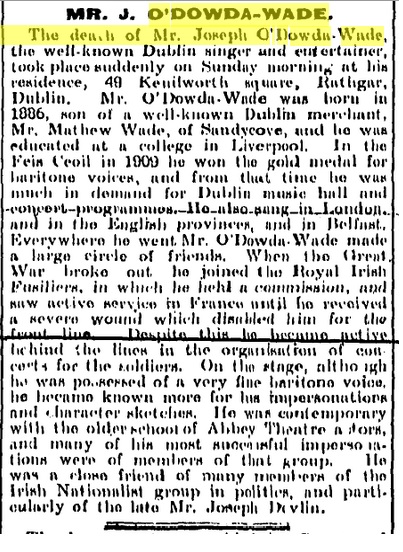
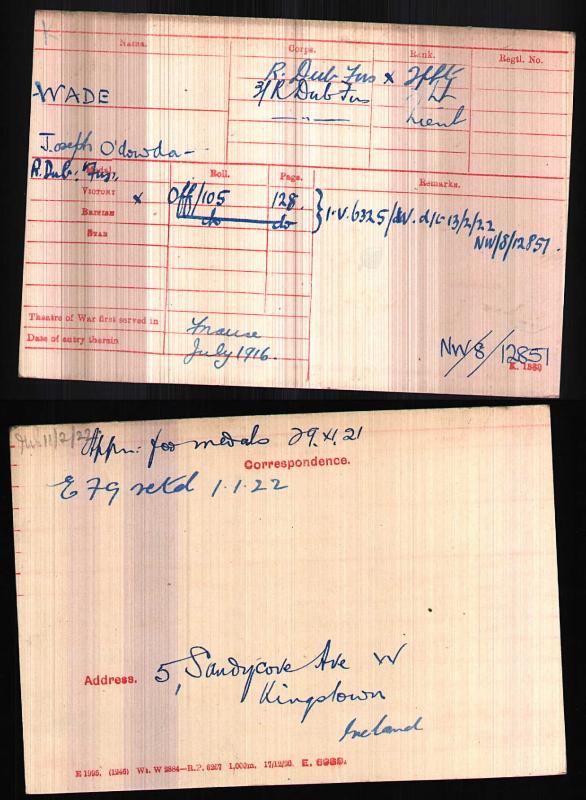 0
0 -
It is hard to not hop into antiques when I am passing them
 0
0 -
Anything to do with the Belfast Harbour Police is fairly rare - although I doubt they have a huge value. Mervyn
Thanks! Yes, we do not see many of these around here. Also Hibernian Marine School is the one that is pretty scare. No. 4 is actually Trinity college.
But the best find was No.1 - Bengal Medical Staff. Button gnomes had been advised that it is pre 1850 button. Similar, post 1860 button, fetched over £33 on eBay recently.... and I got 6 of them!!!!
0 -
Yes, these lights ones are nice. I know an officer WW1 group to the (RE I think) Irish lights man. If I can secure it some nice day, these buttons would be prefect for a display with the gongs!
Also I was just advised that the RUC button is first pattern one, after they were separated from RIC.
0 -
Hi all,
Again, not much time for the forums (exams next week + two in January - not looking forward of them but has to be done!).
Anyway, on the way home from college, I managed to secure this lot.
Nothing mad rare but I like these unusual institutions buttons. Something with the twist!

First row (left to right)
1. Bengal Medical Staff. Hollow button, maker "W&R* Smith" Got 6 of them
2. Belfast Harbour Police. Maker "Foley & Croker * Dublin"
3. Dublin Port and Docks Board. Maker "j.R.Gaunt * London"
4. ? (some college?)
5. Commissioners of Irish Lights. Maker "Badge & Button * London"
6. Blackened Commissioners of Irish Lights. Maker "Buttons Limited * Birmingham"
7. Belfast Harbour Police. Maker "C & J. Weldon * London"
Second row:
8. ???? Maker "Firmin * London"
9. Clyde Navication. Maker "Ltd. RVH * Smith & Wright"
10. Very small Army Veterinary Service. Maker "Firmin & Sons"
11. ???? looks old. Maker "Doppelt V Vergoldet" (???)
12. Hibernian Marine School. No maker
13. "This I'll defend" ???? "Comyns & Sons * Dublin"
14. Bank of Ireland (as a client, I know institution well )
)
Last row:
15. Royal Corps of Transport. Maker "Gaunt * London"
16. ??? Maker "Firmin * England" Looks very modern
17. Royal Ulster Constabulary. Maker "Firmin * London"
18. Lothians & Border Horse Yeomanry. Maker "I & B. Pearse * London"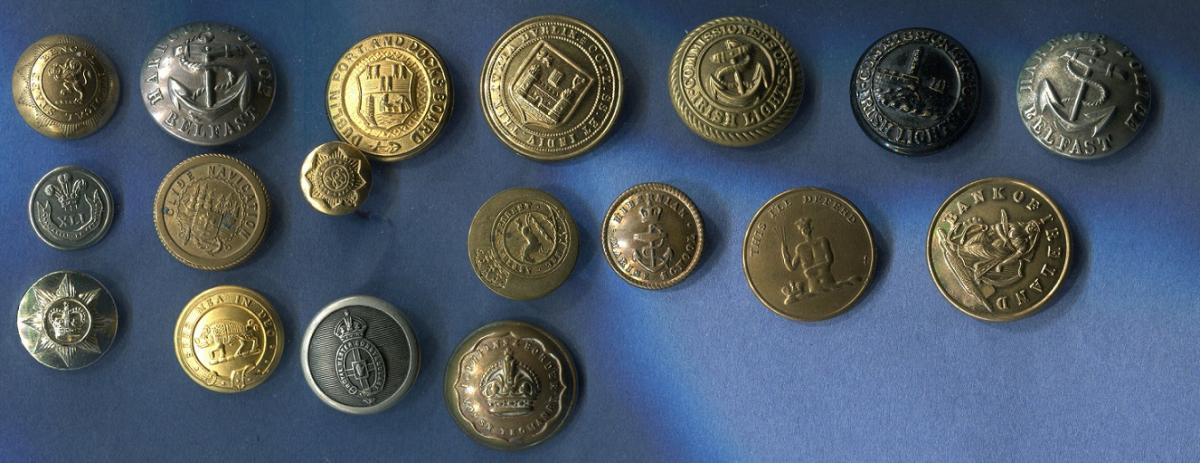 0
0





SAAF - Captain V.A.Donnolly
in Great Britain: Research, Documentation & History
Posted
Hi all,
I am trying to research two medals that I have here. If any of you have some information about this man below or can add here some facts that would suite into my initial text, please let me know. Also, is it possible to confirm what another medals he was entitled (I know missing Victory medal). Finally, how much usually WW2 period SAAF cap badges cost? I am looking one for a display with his medals.
Victor Albert Donnolly (1897 – 31.03.1943)
Captain
WW1 SA Irish regiment and 2nd CC corps
WW2 South African Air Force
Victor Albert Donnolly was son of Robert and Harriet I. C. Donnolly. He was married with Ruby Donnolly, of Bloemfontein, Orange Free State, South Africa.
Victor saw service with the SA Irish Regiment and 2nd CC corps as a NCO. He later on joined the South African Air Force (SAAF) after it was established at the 1 February 1920. He had a very low service number P/204 that I presume indicates early recruitment. He was commissioned and rose to the rank of Captain.
He died when he fell out of Hawker Hartbees aeroplane during thest flight near Eastleigh Nairobi in 31 March 1943. He is buried in the Nairobi War Cemetery.